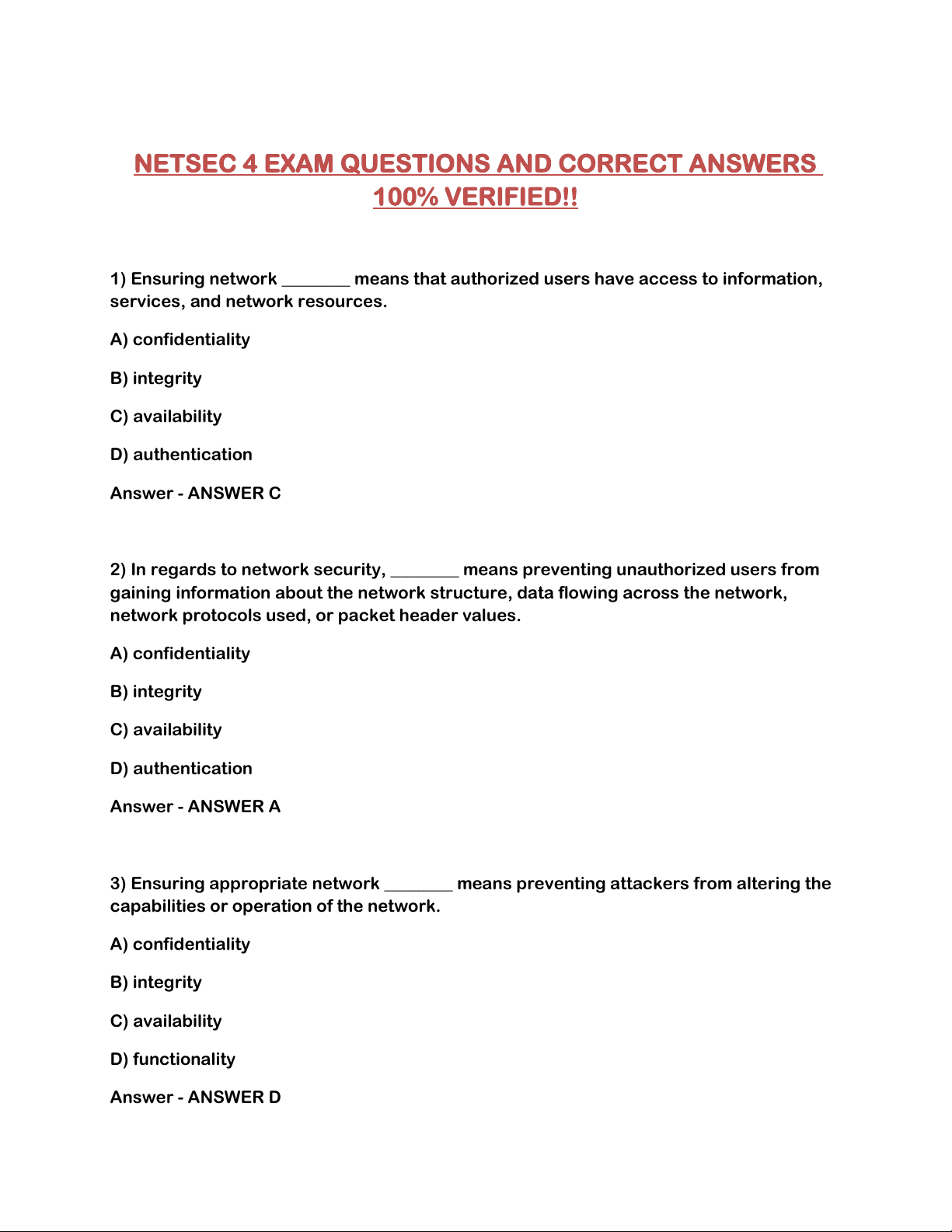
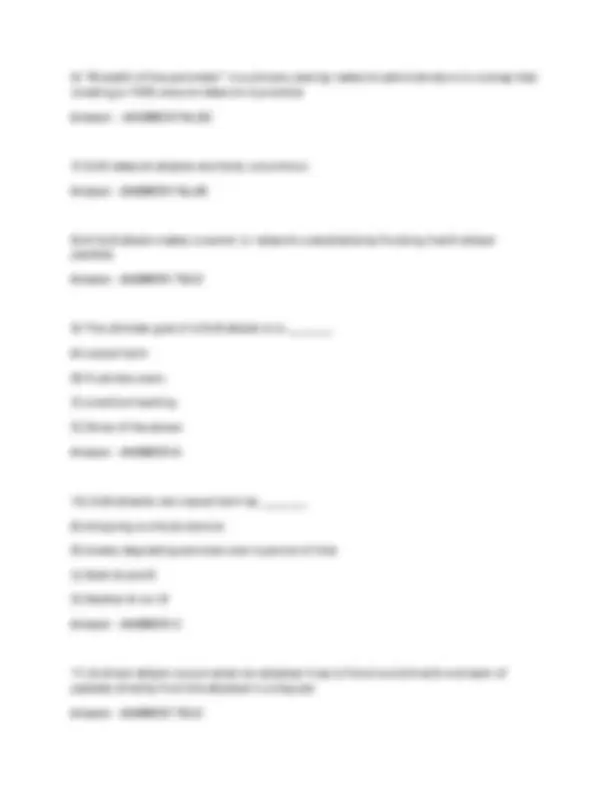
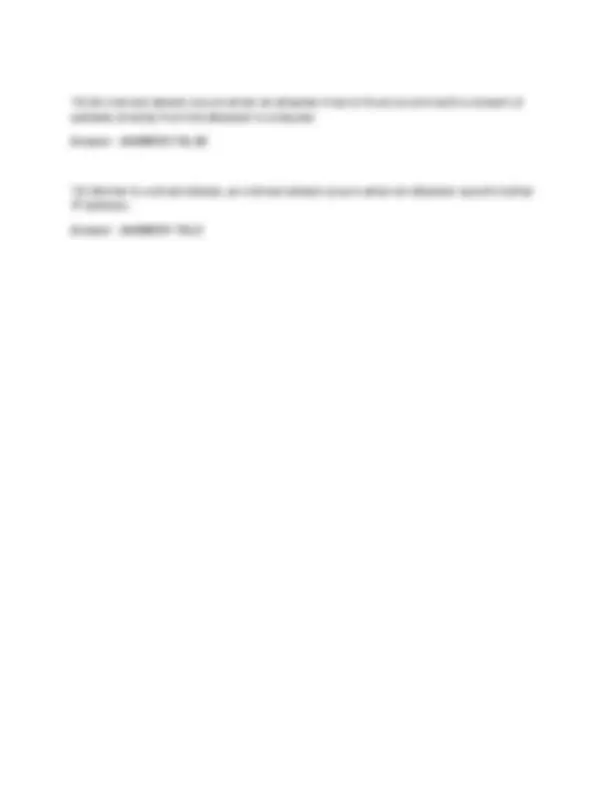
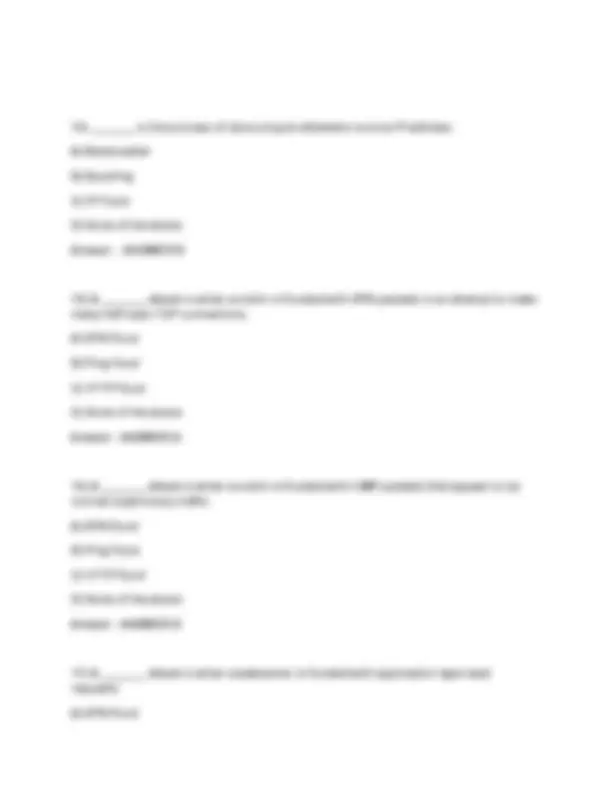
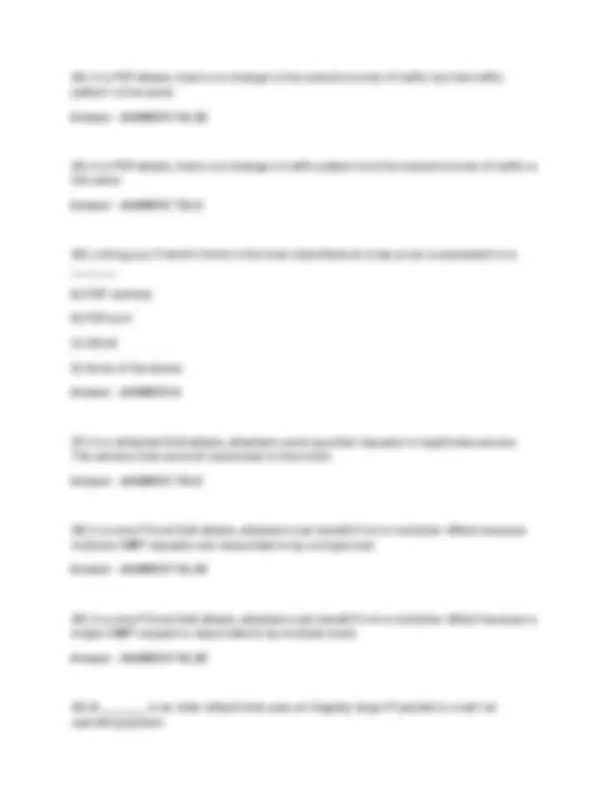
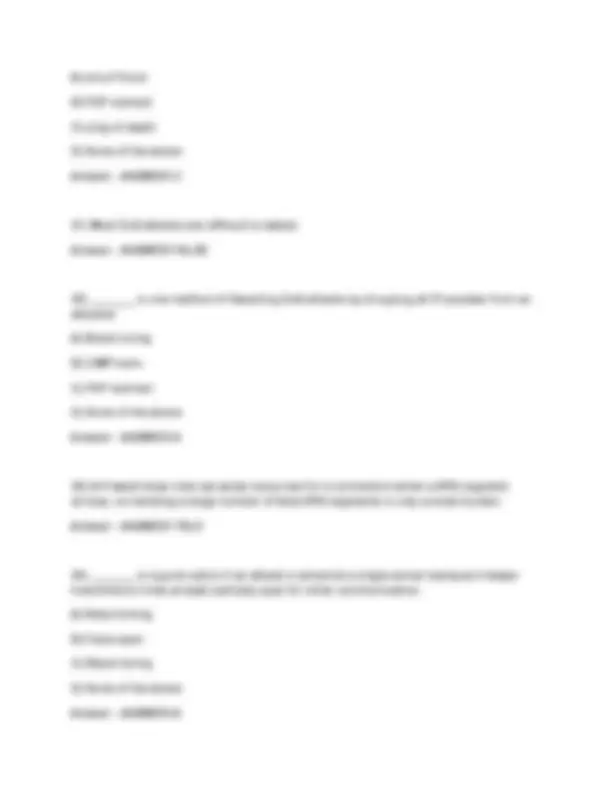
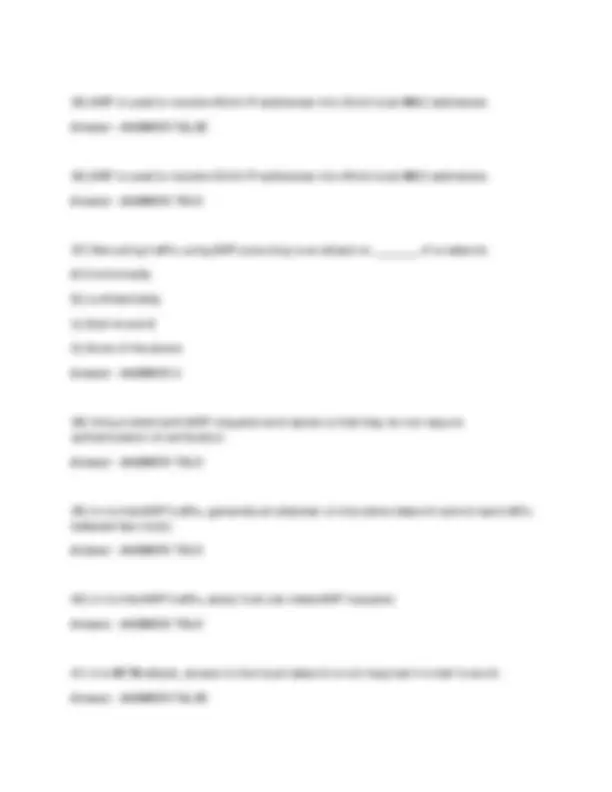
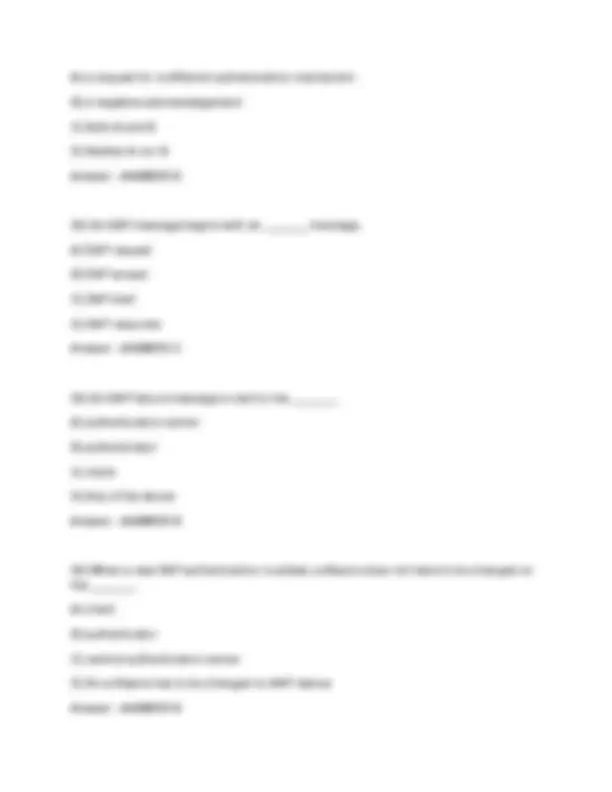
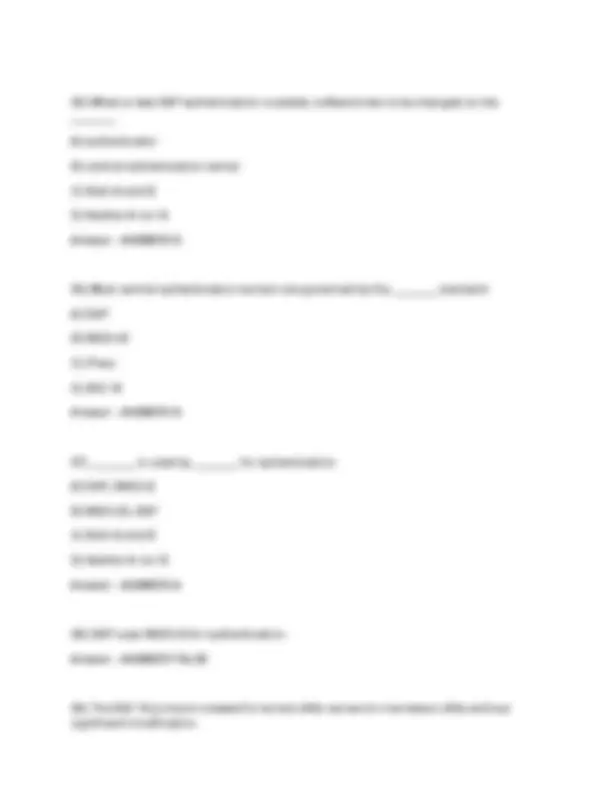
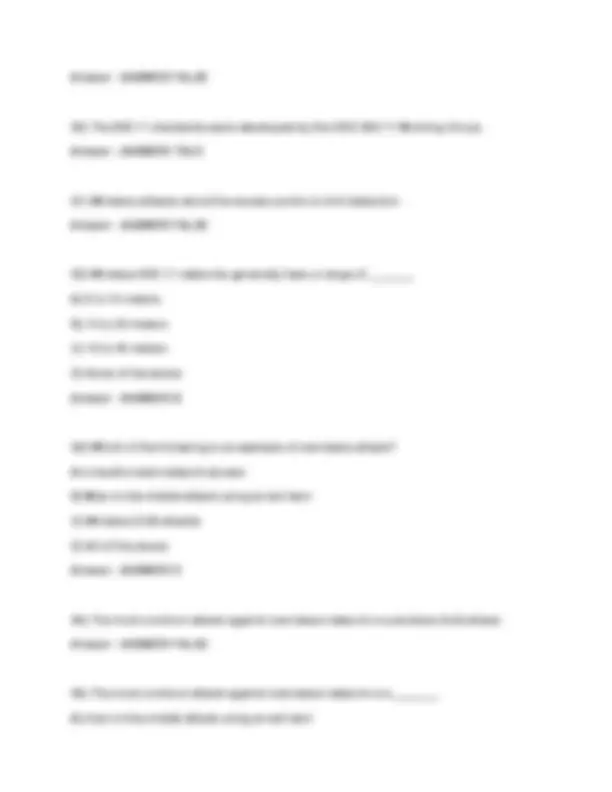
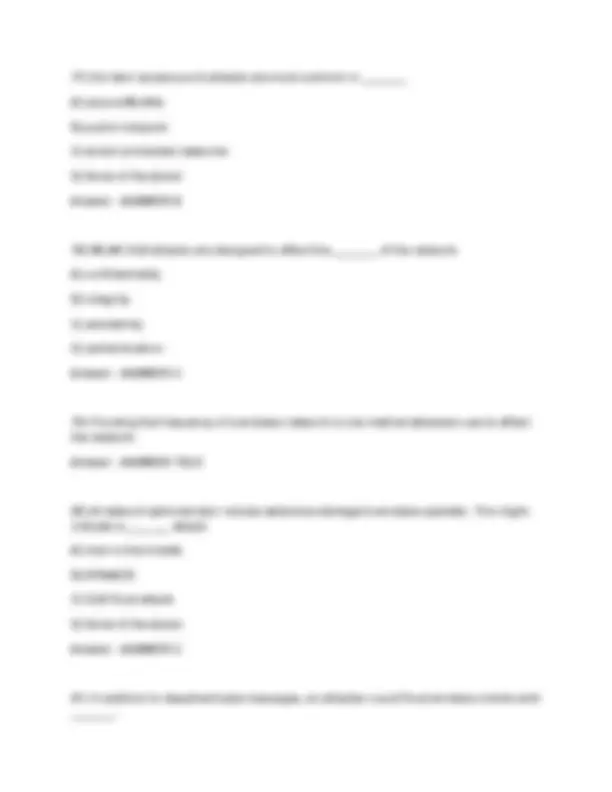
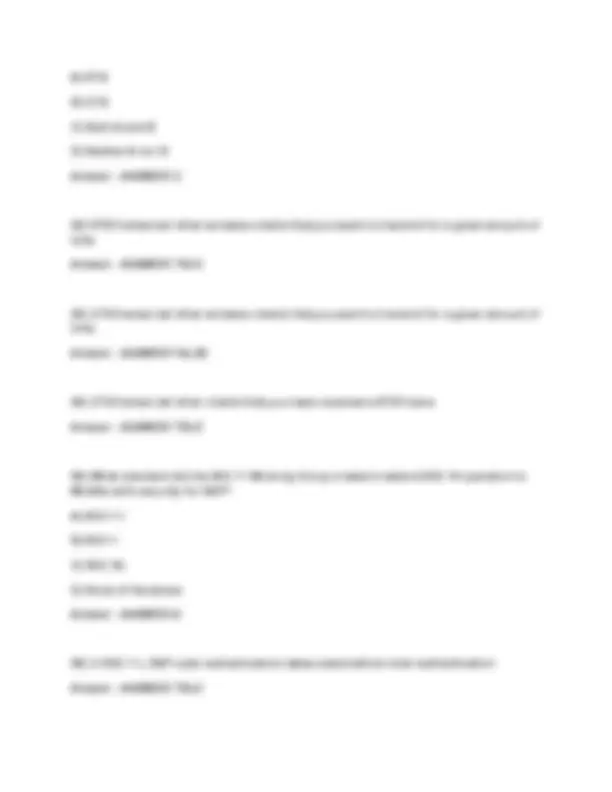
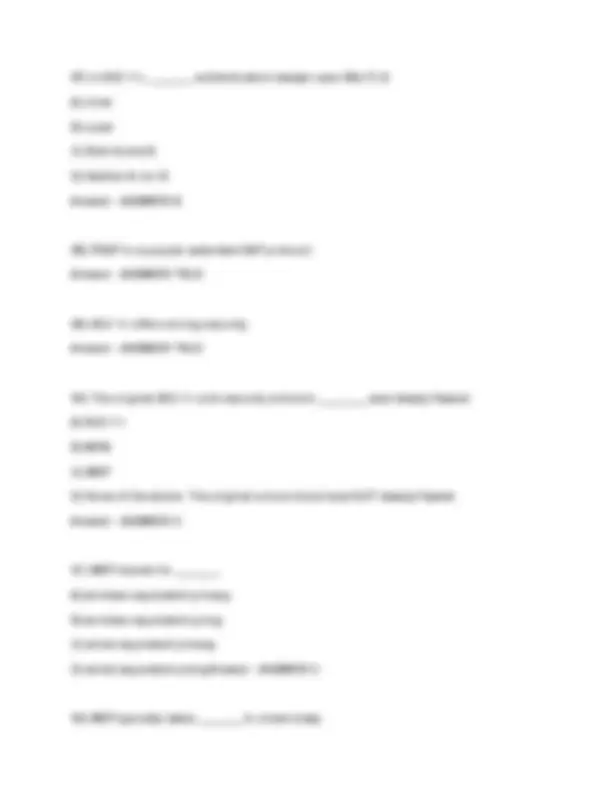
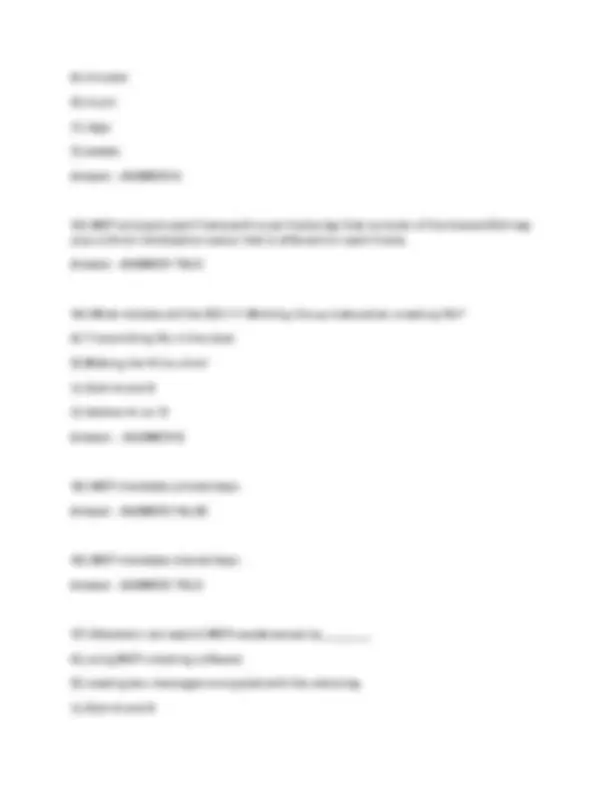
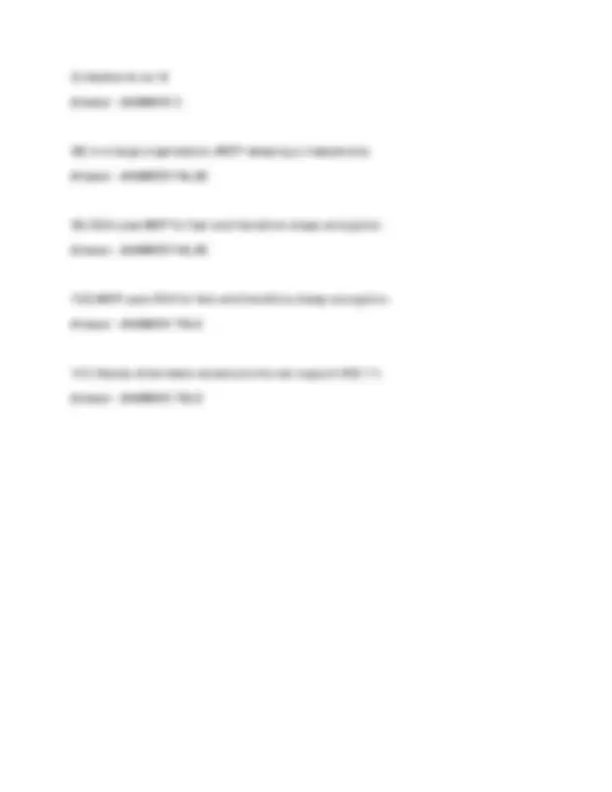
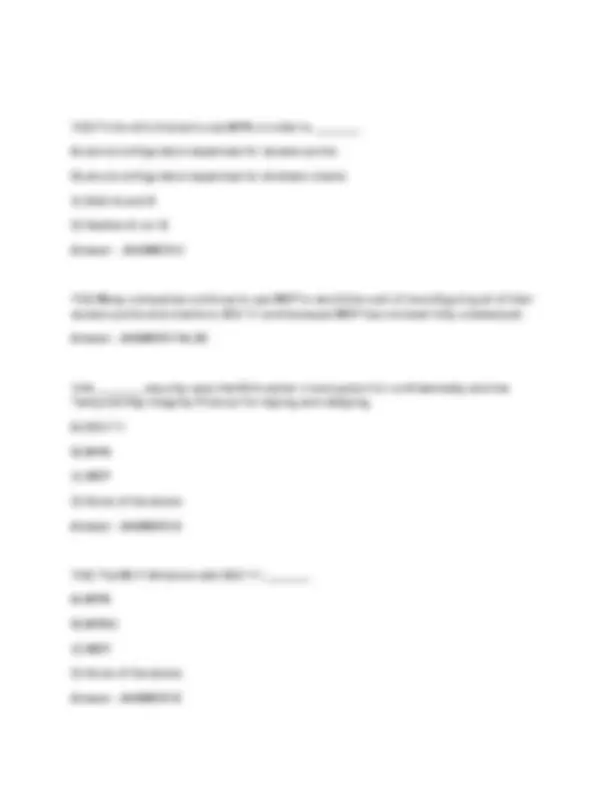

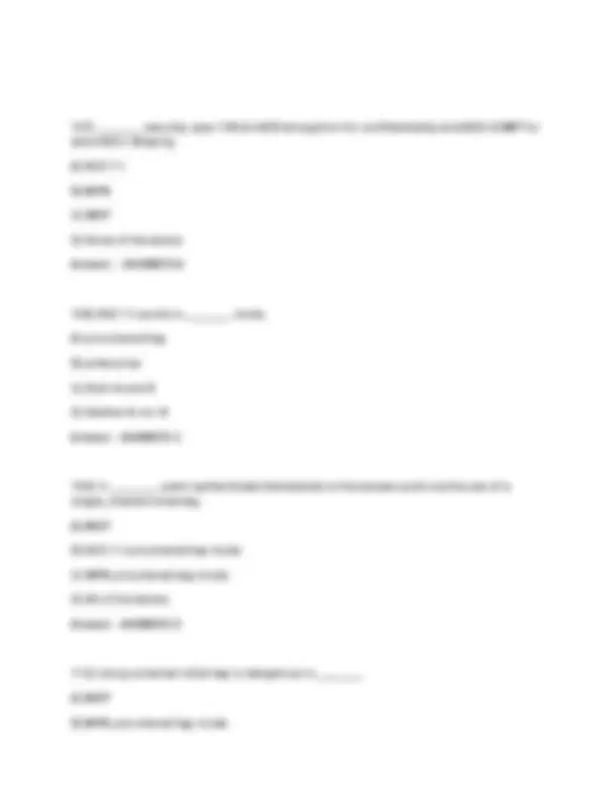
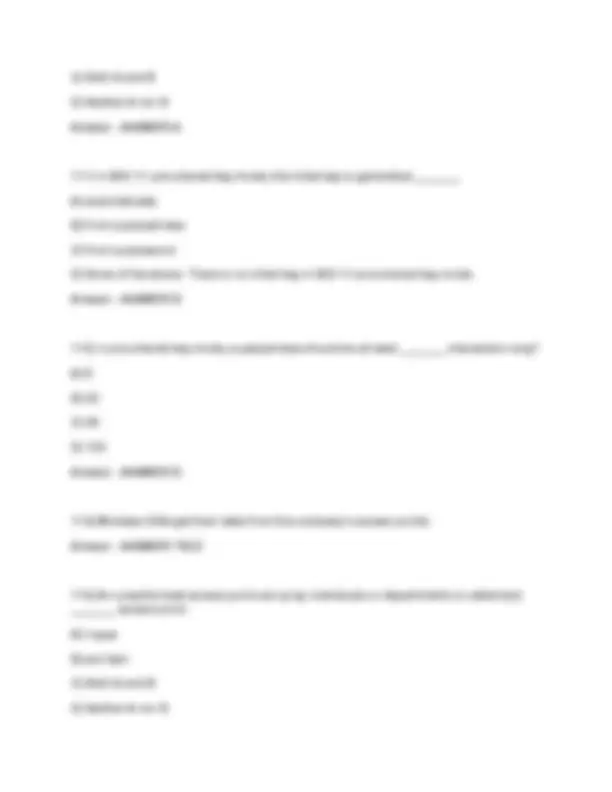


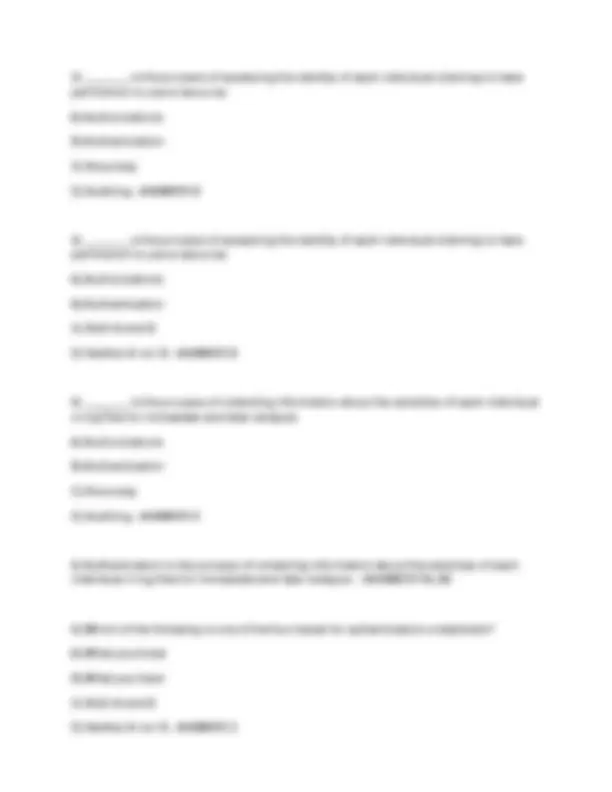
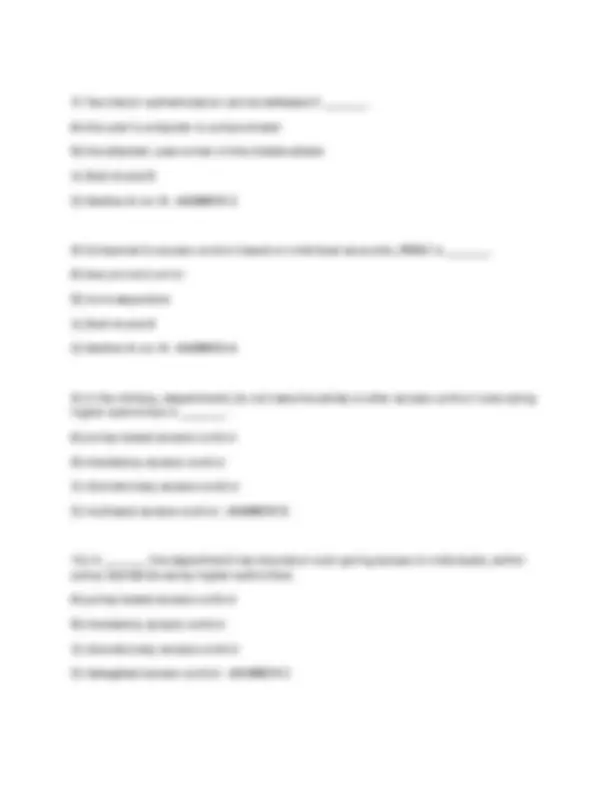
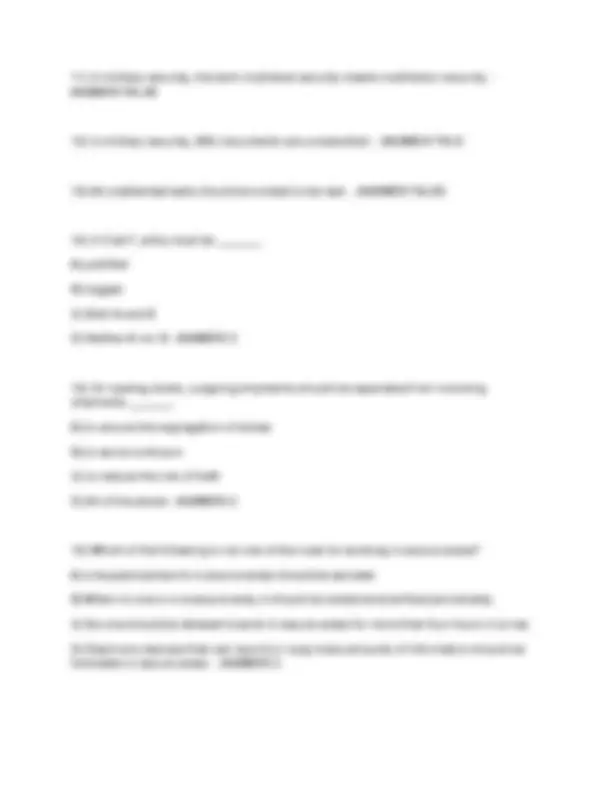
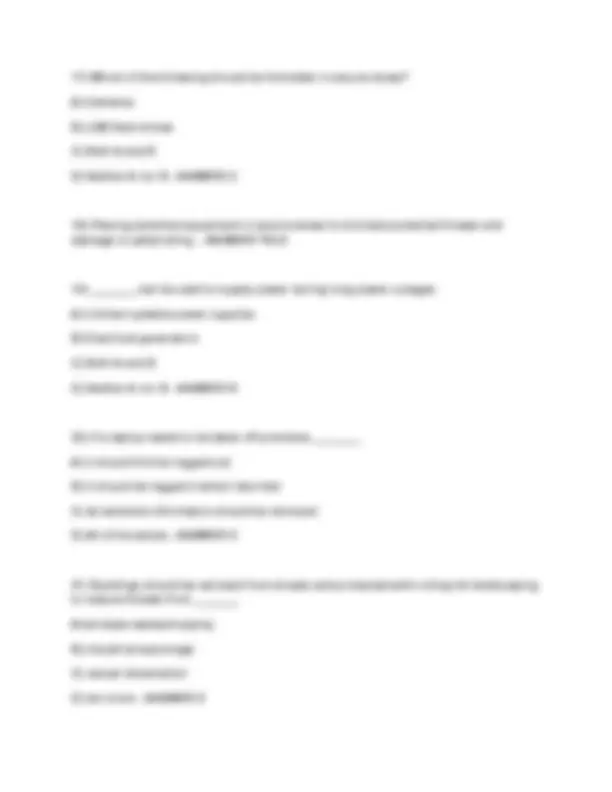
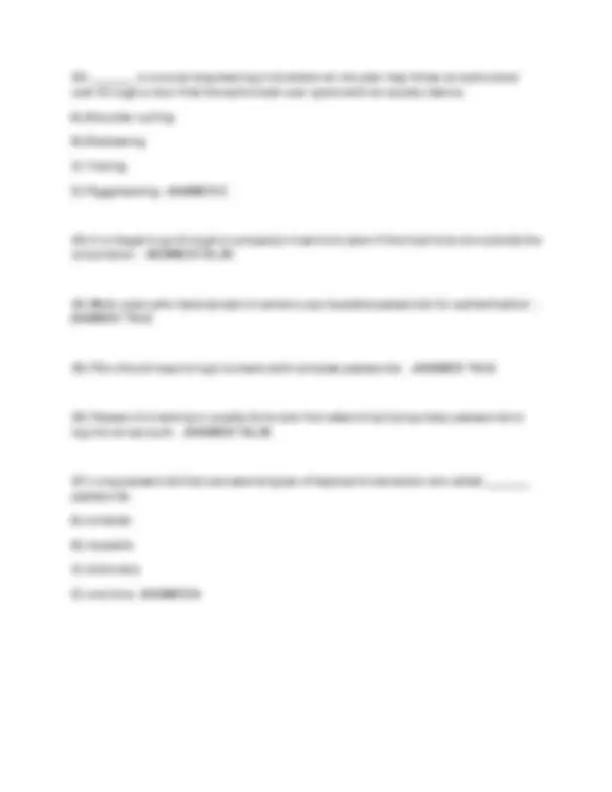
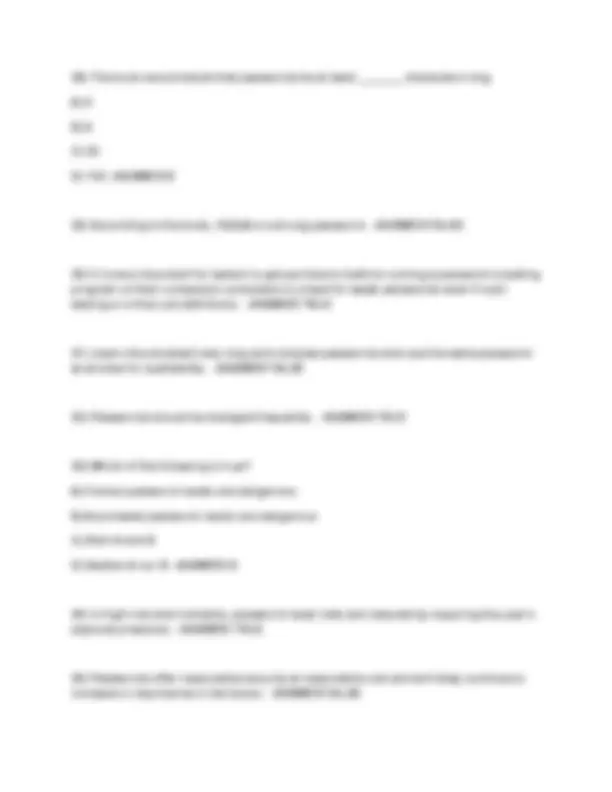
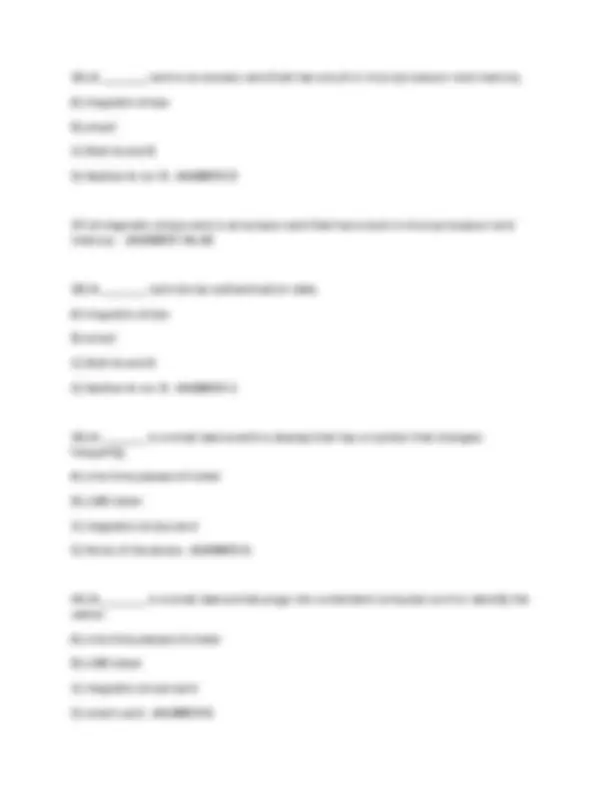
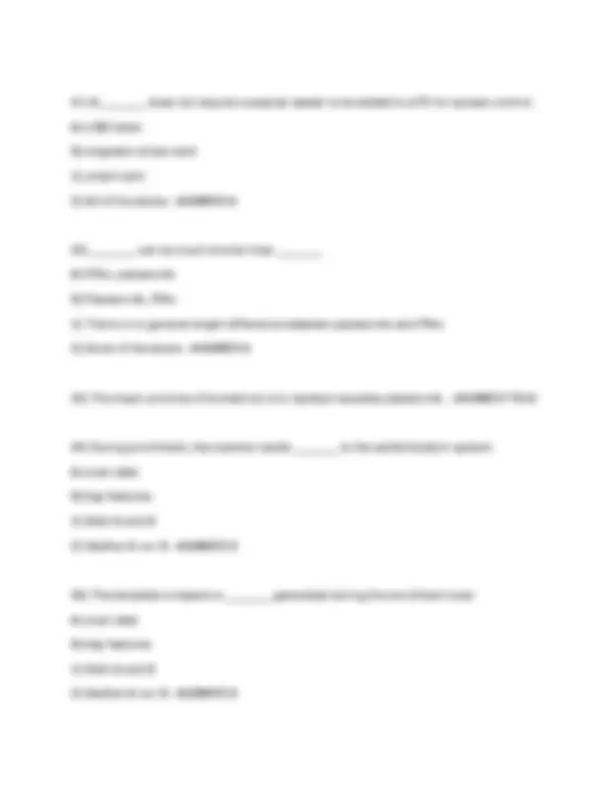
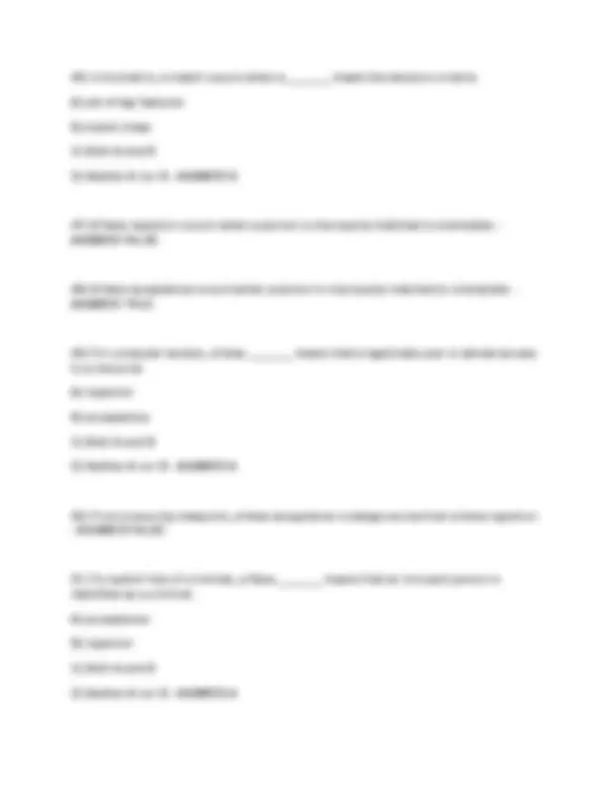
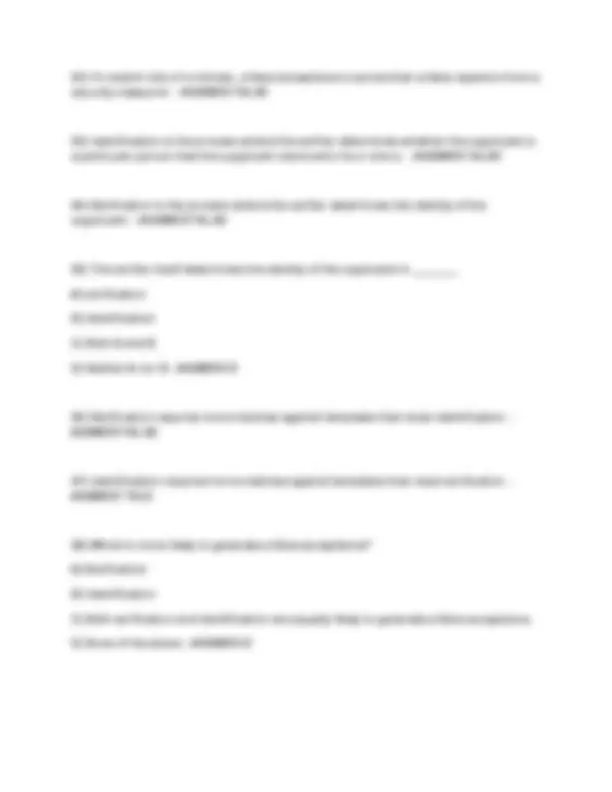
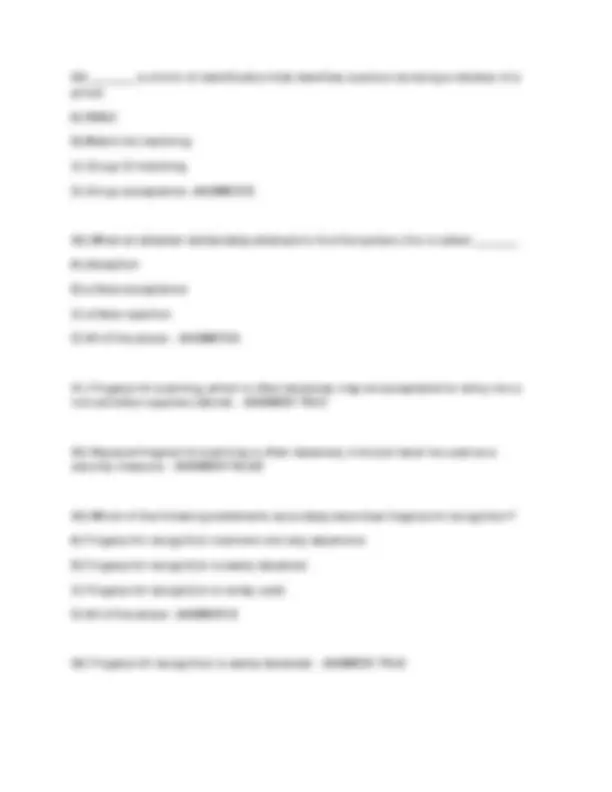



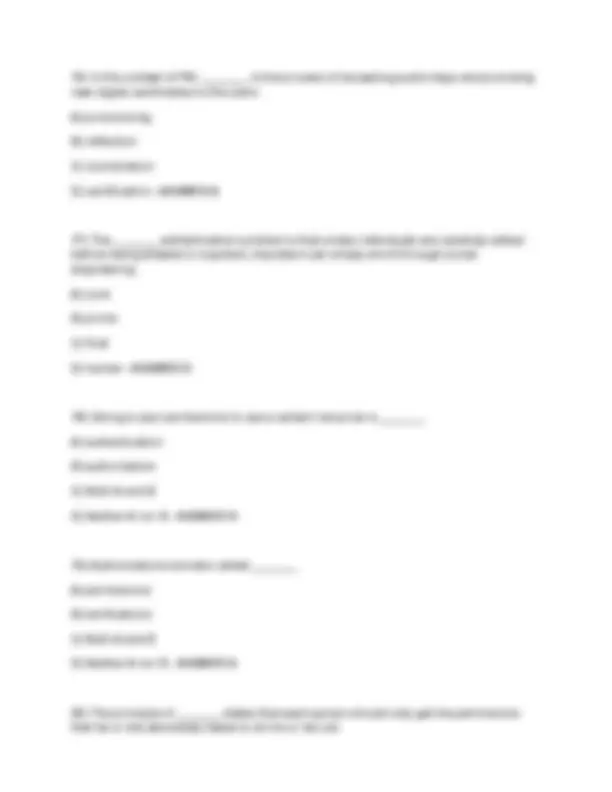
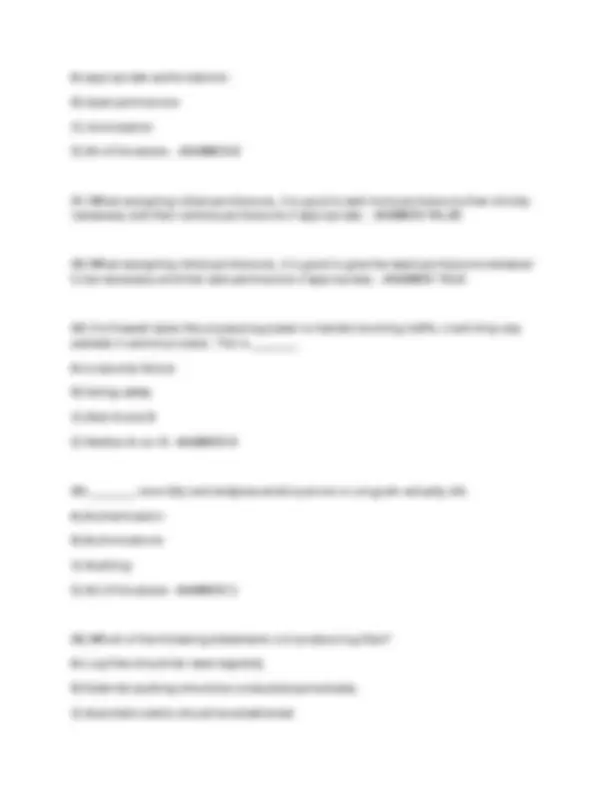

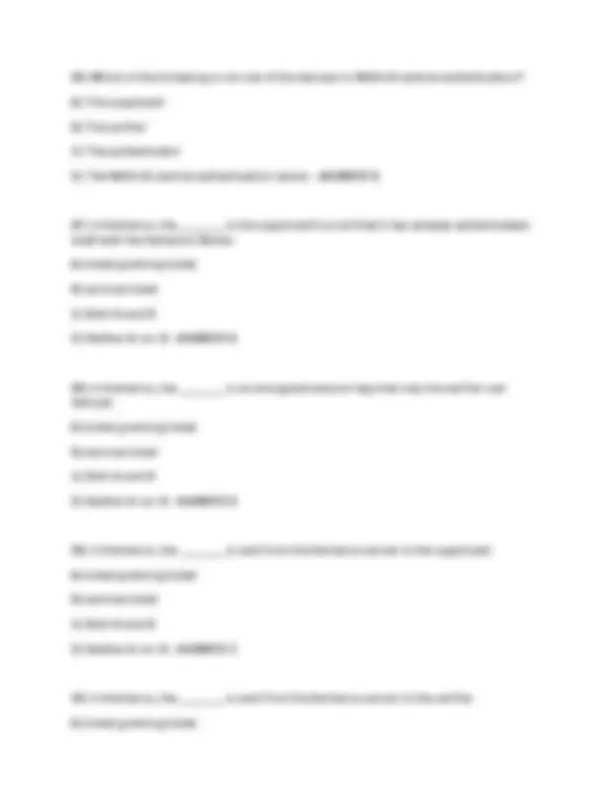

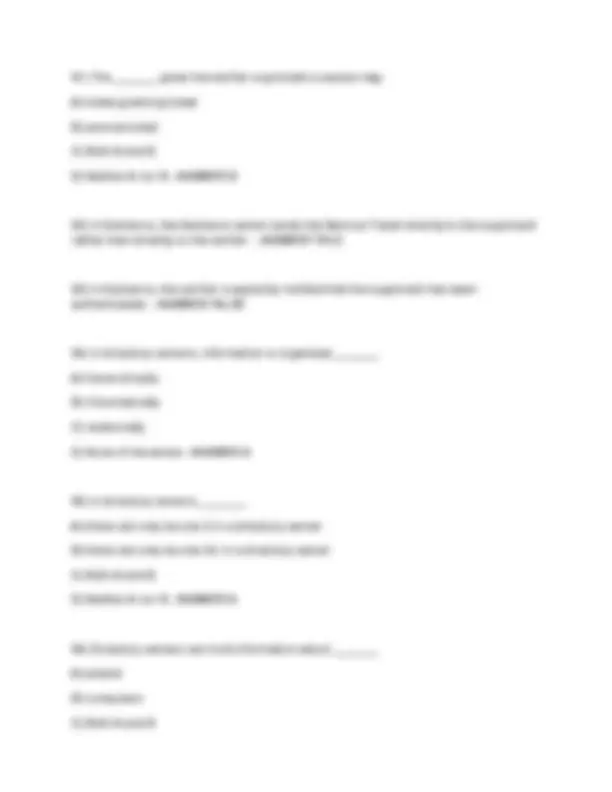


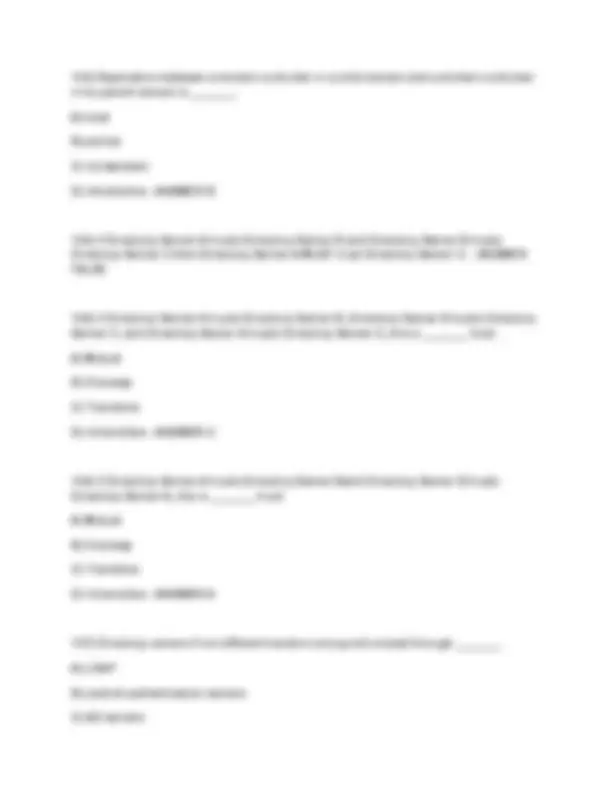

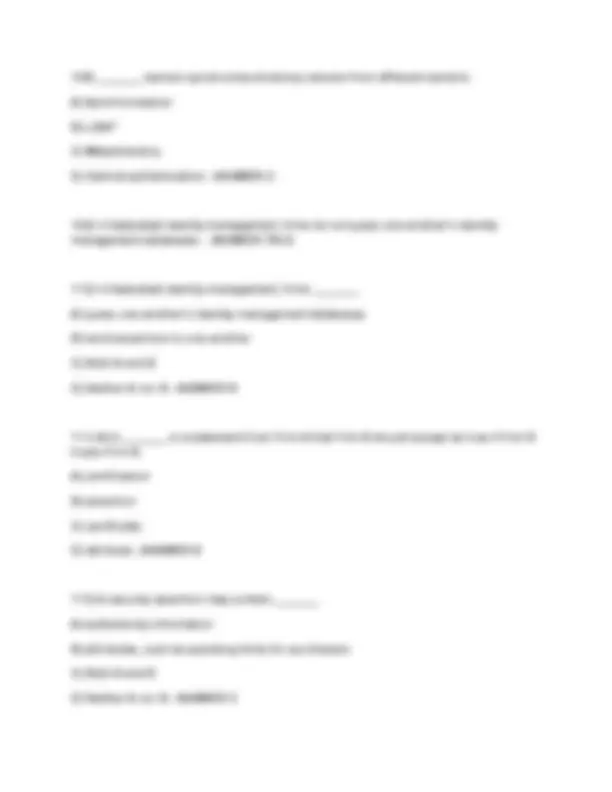
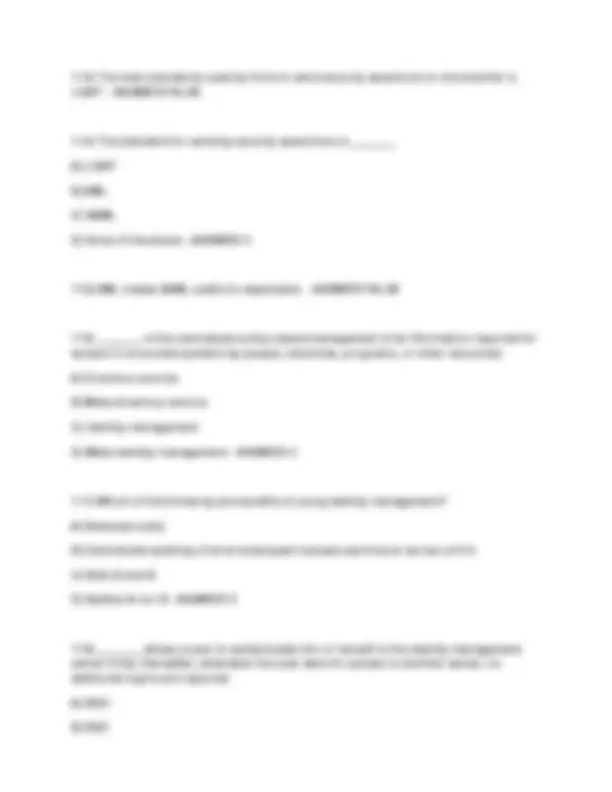

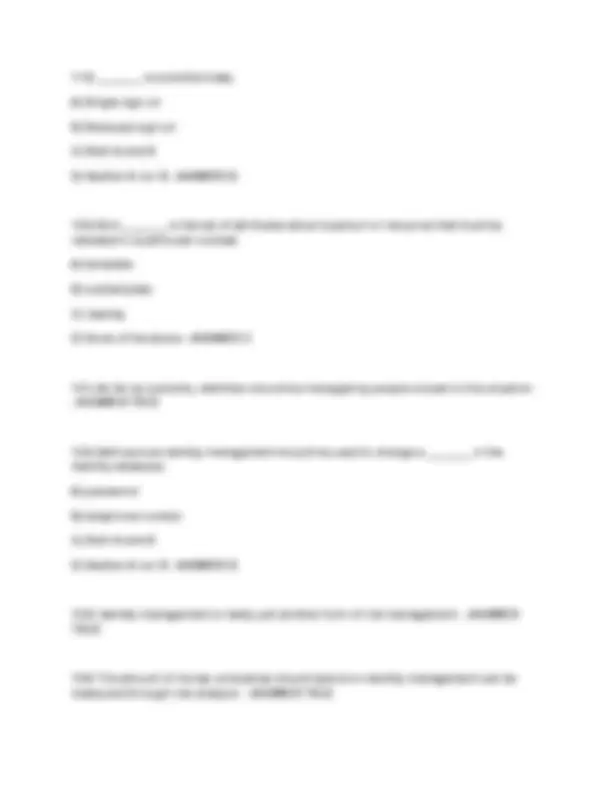


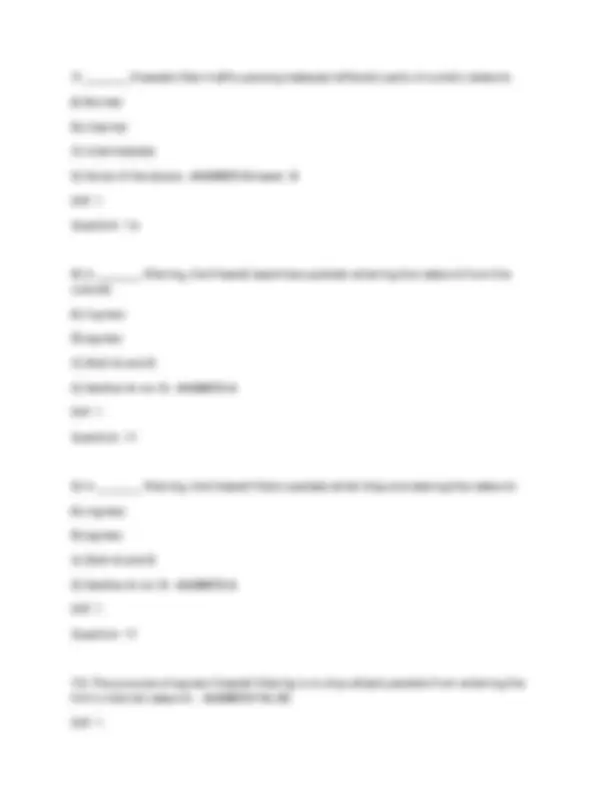
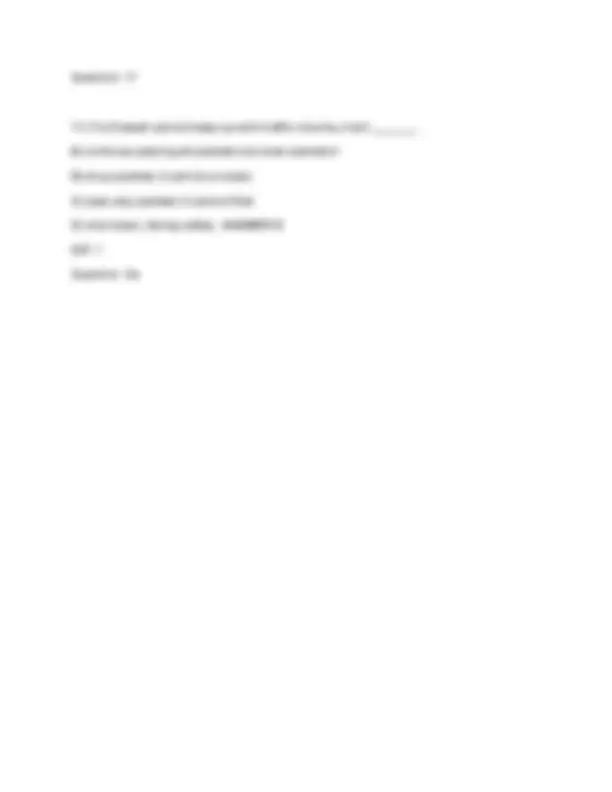
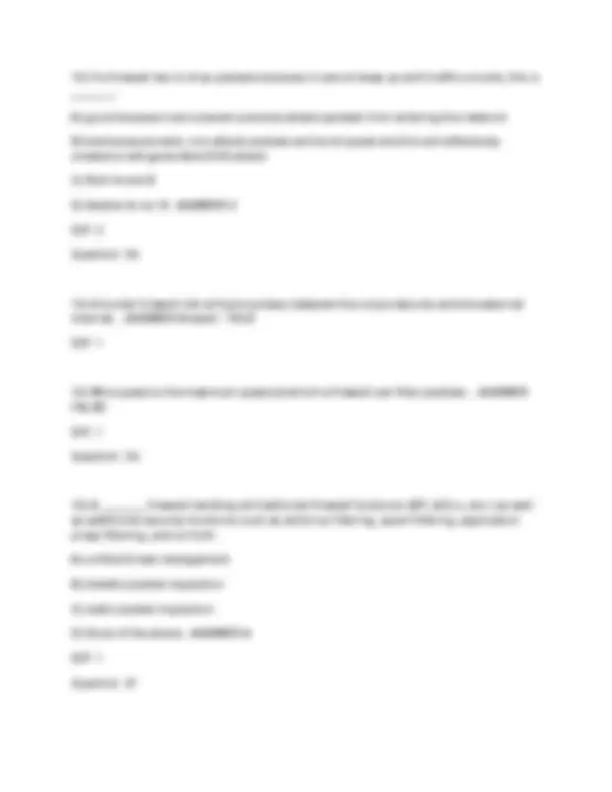
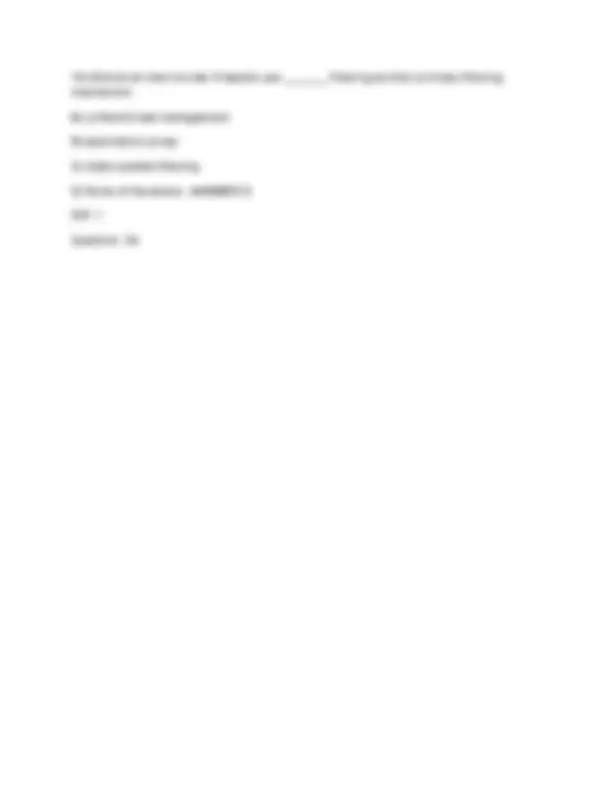
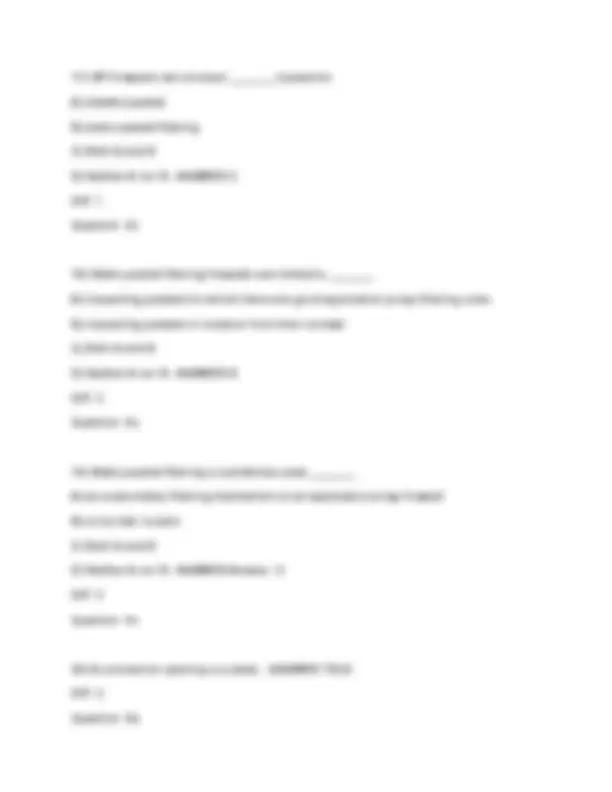
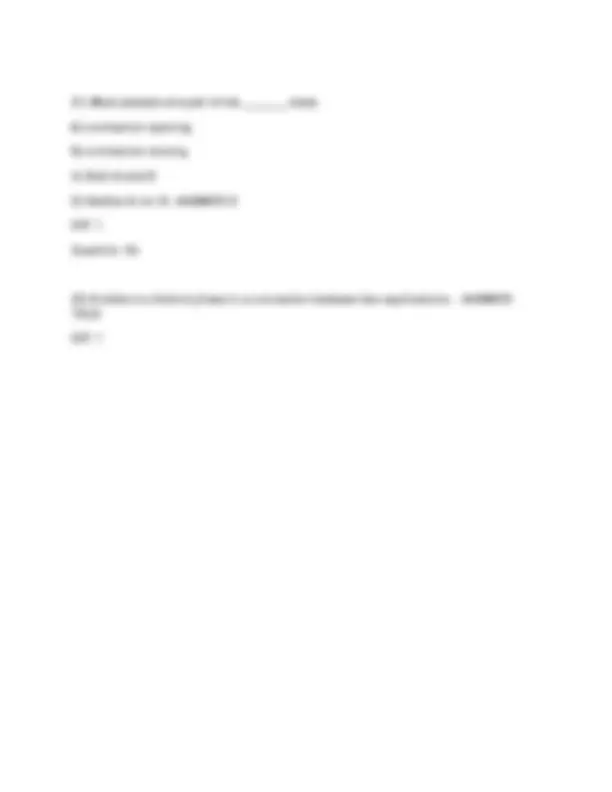
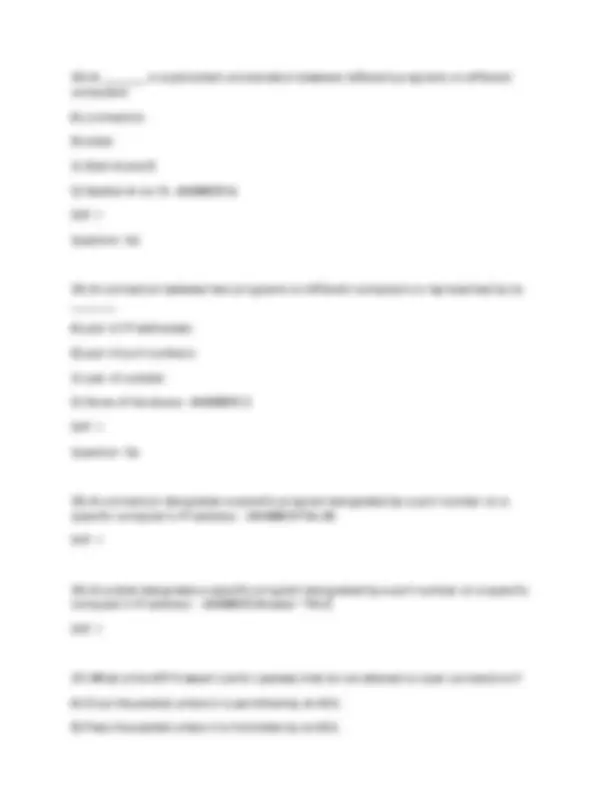
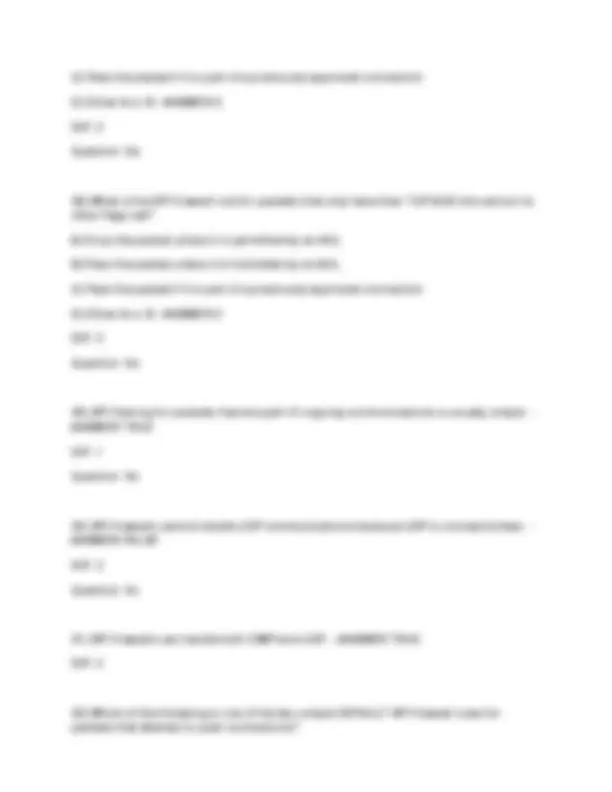
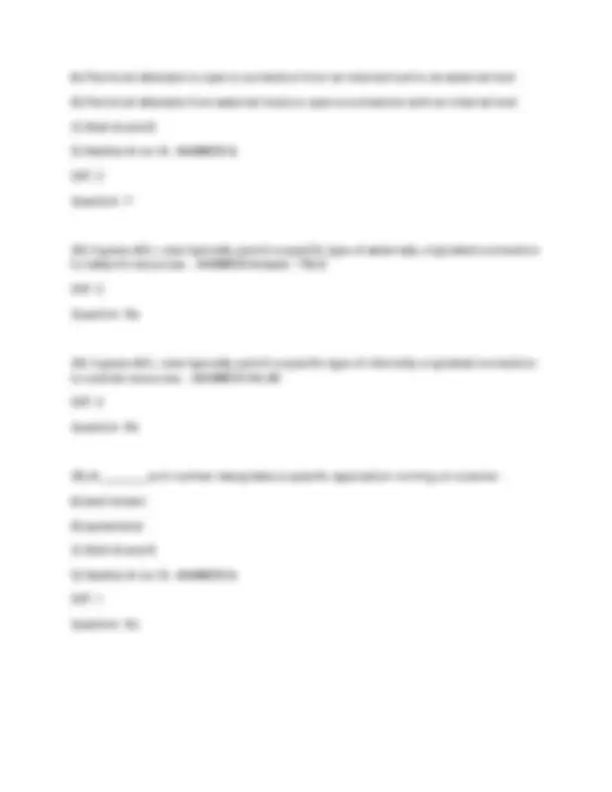
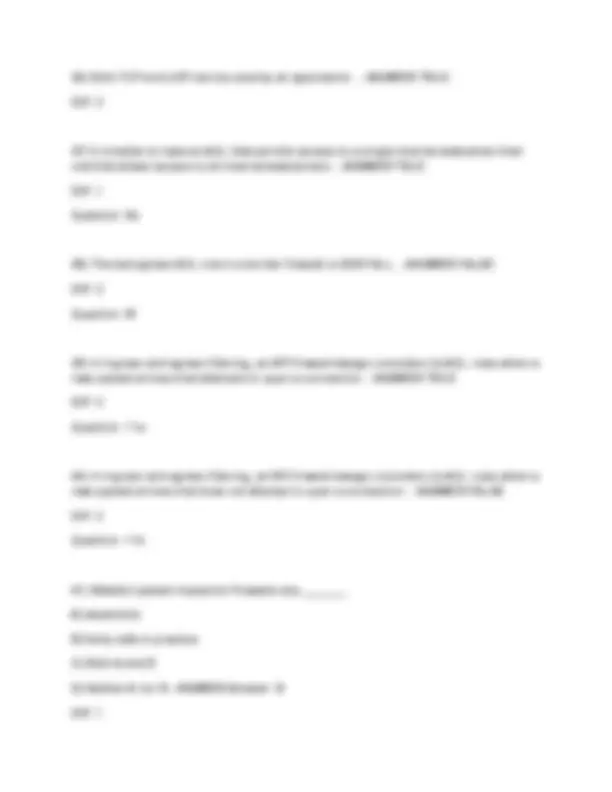

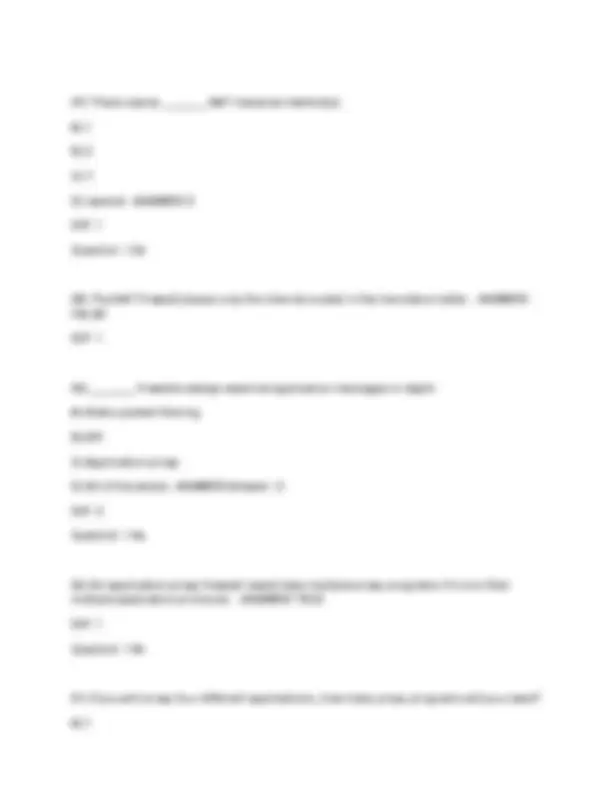
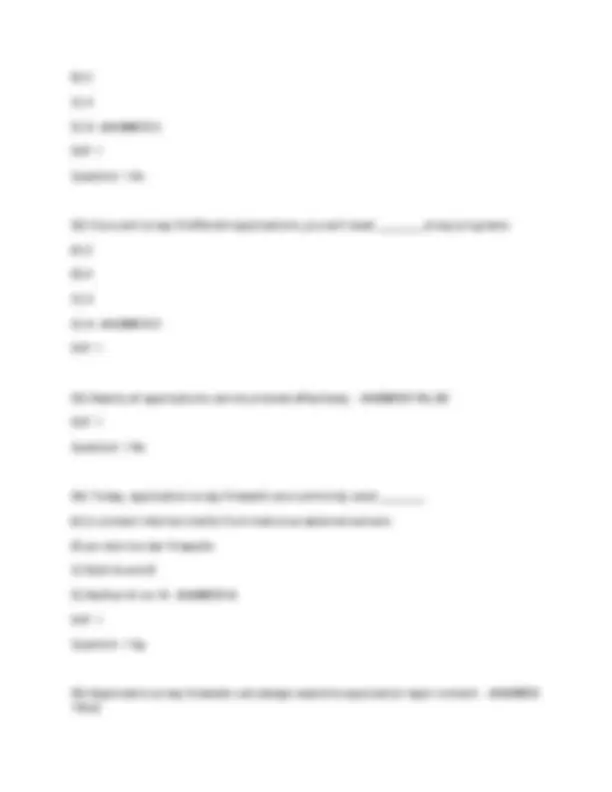
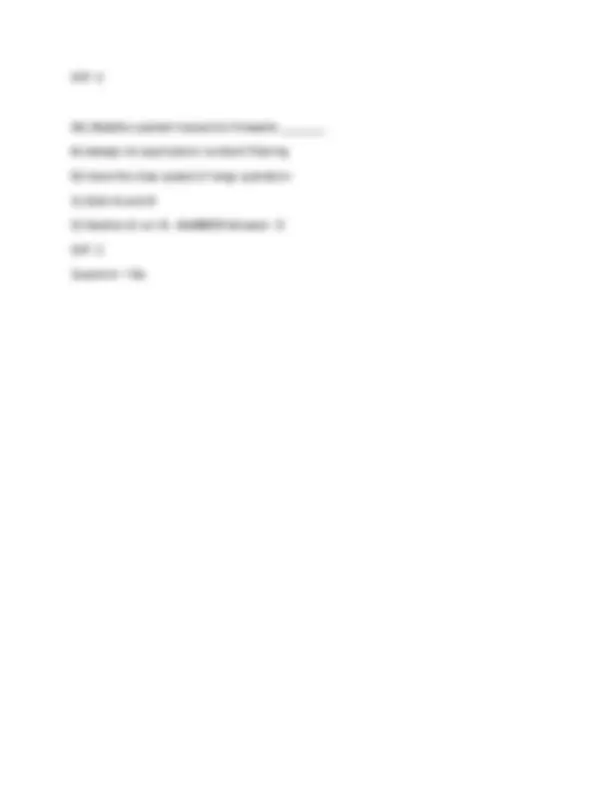
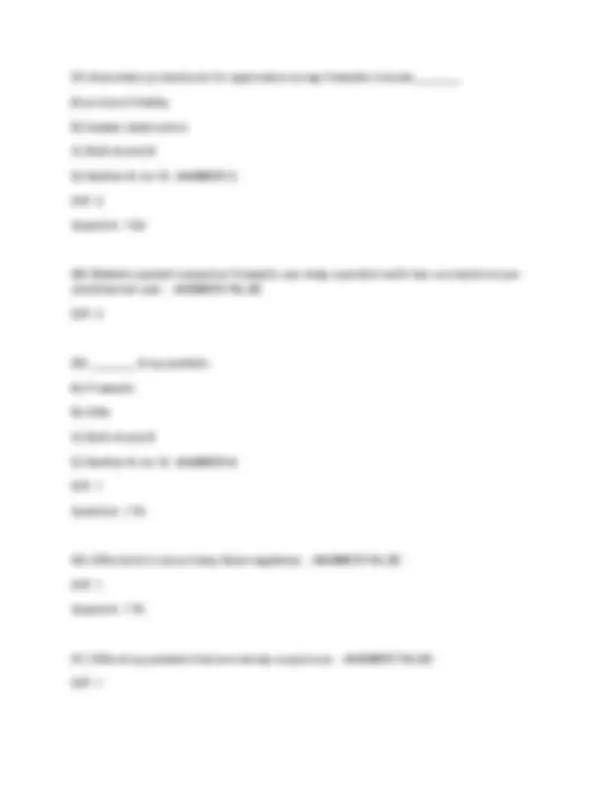
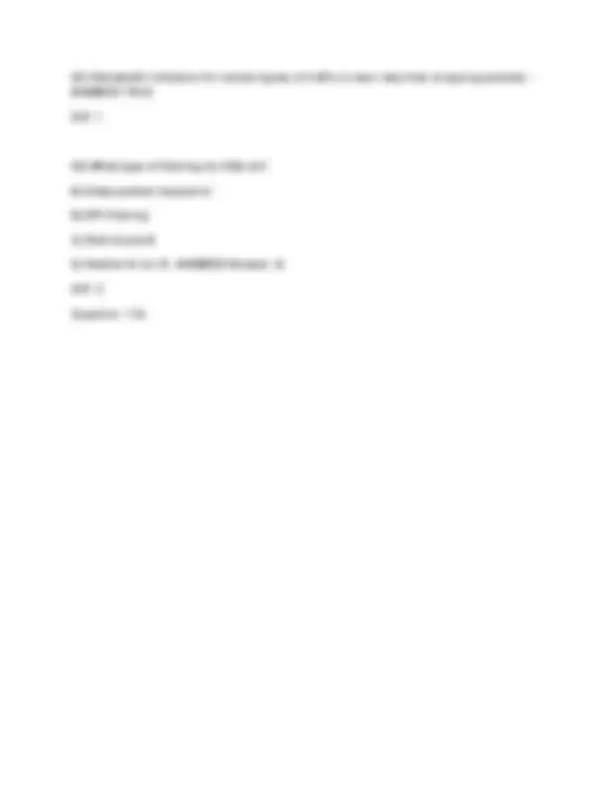
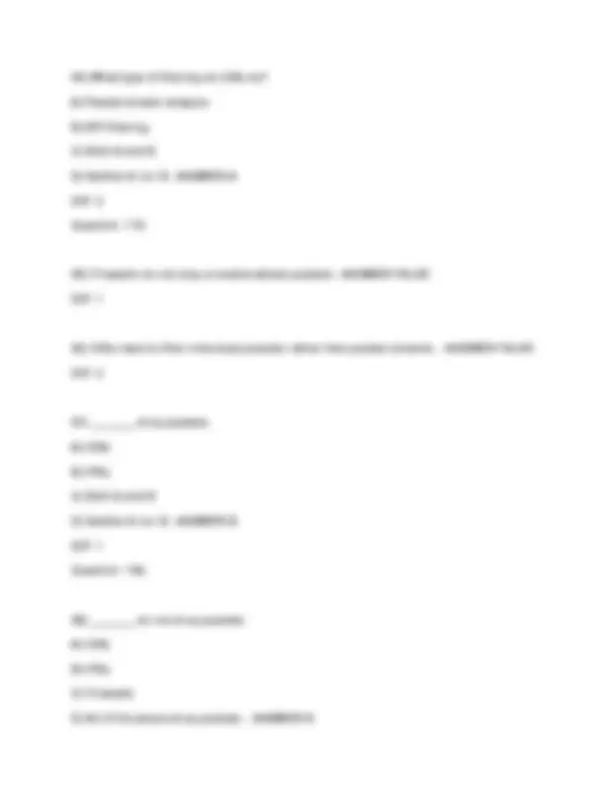
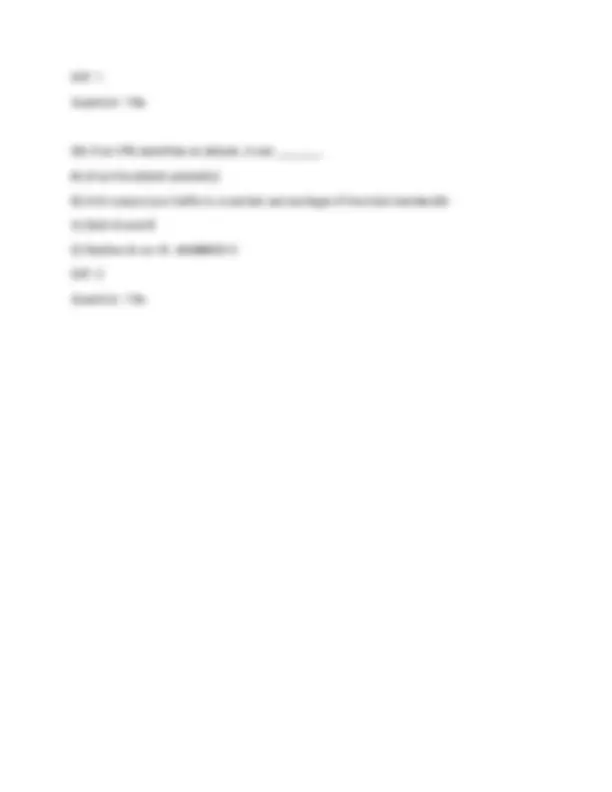
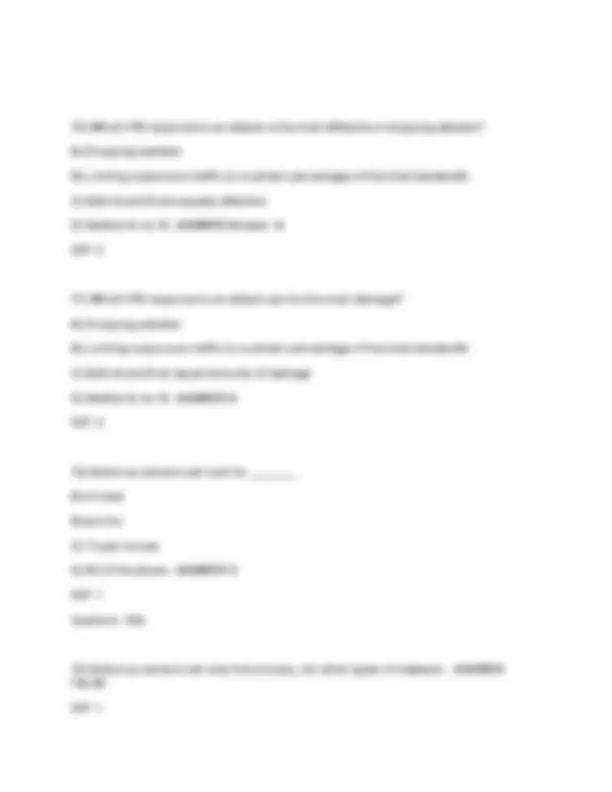
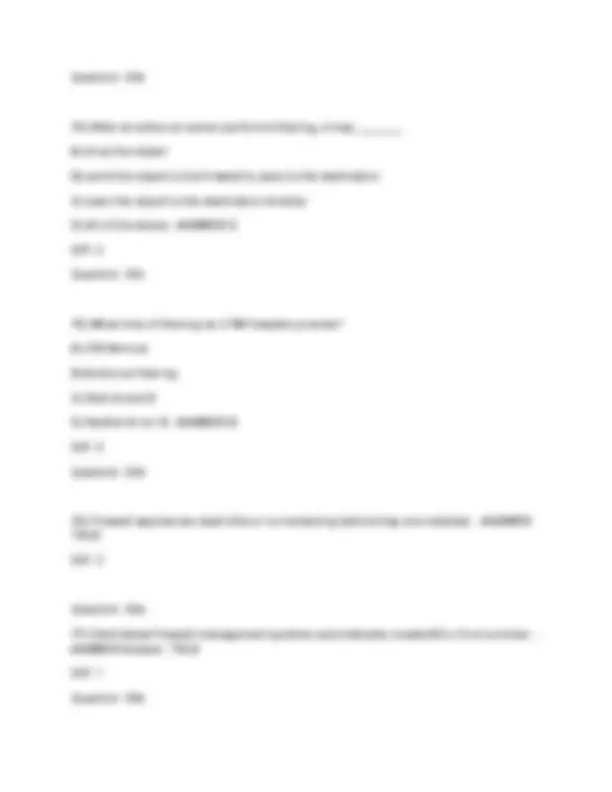

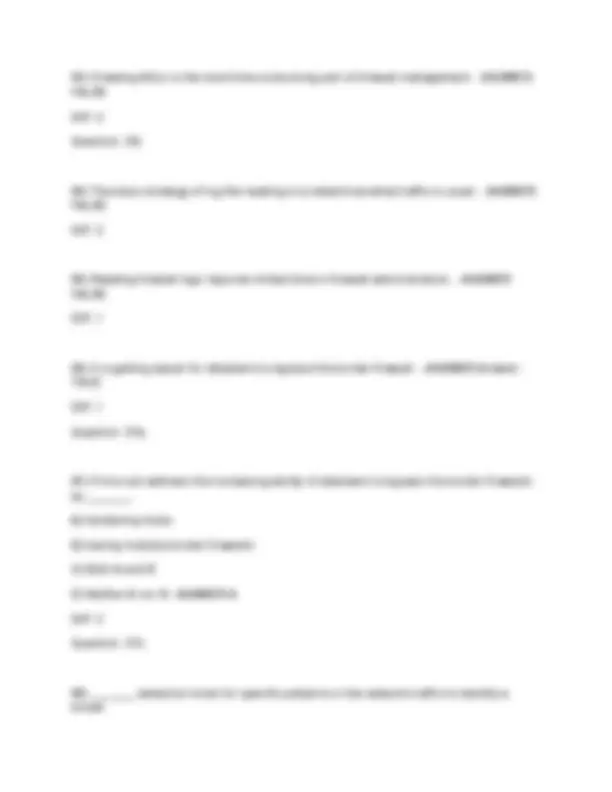
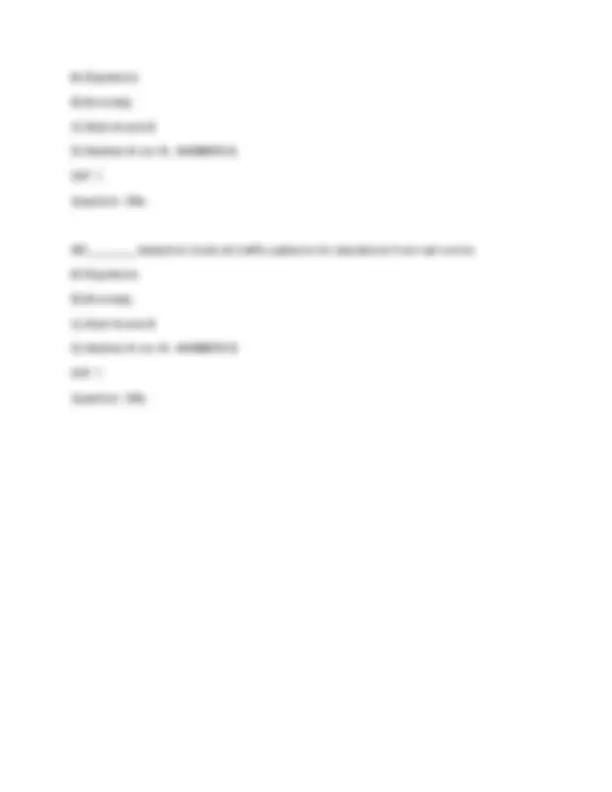
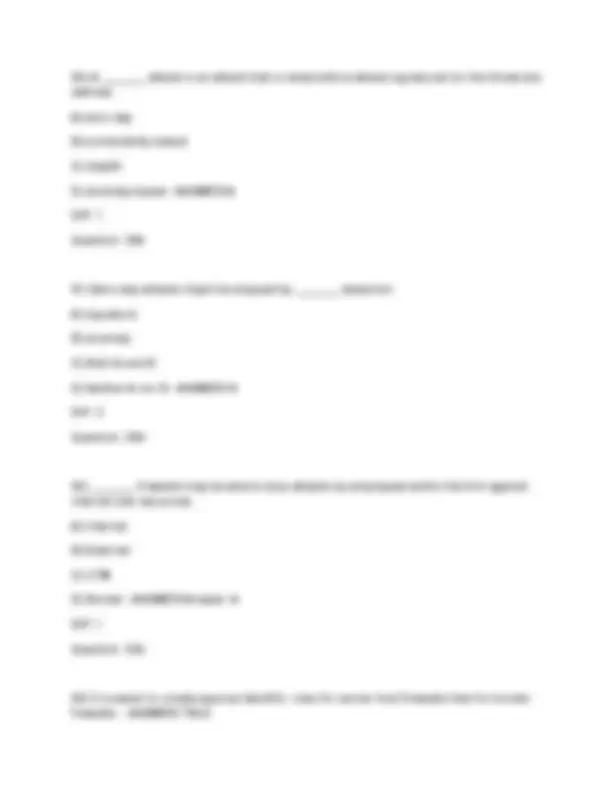
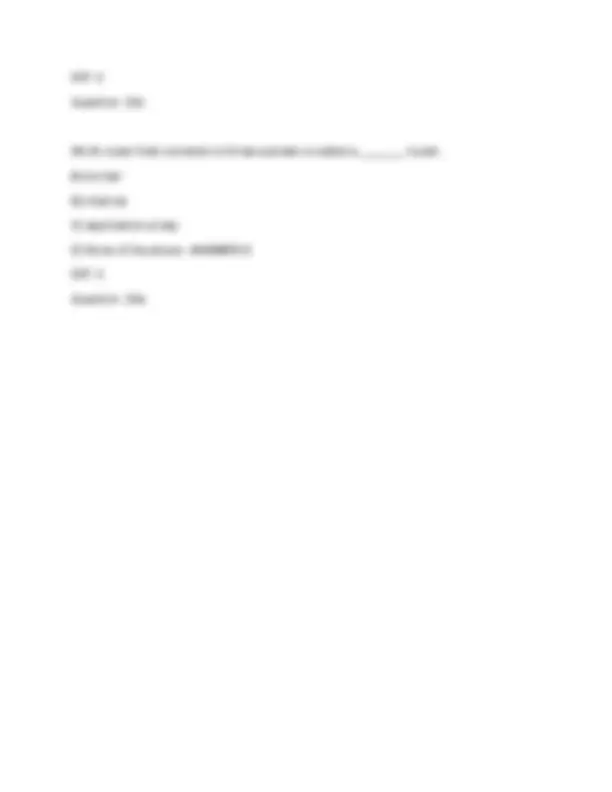
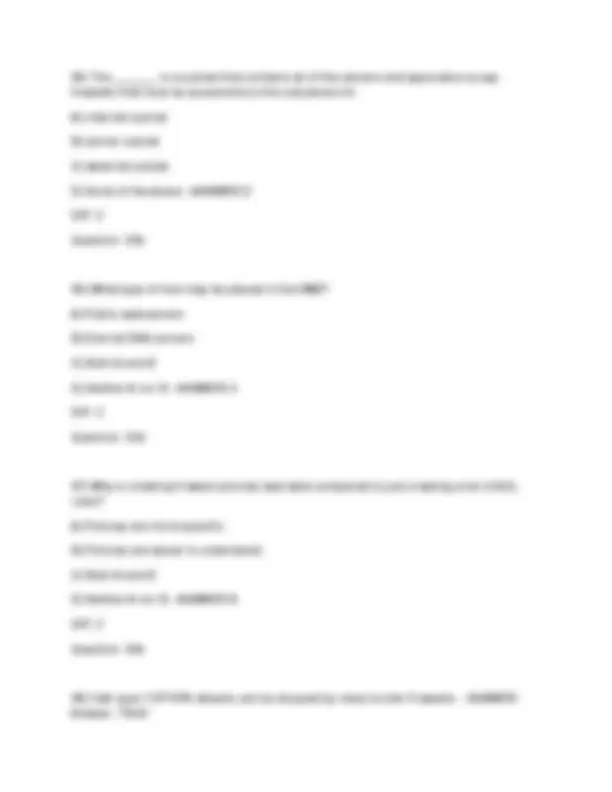
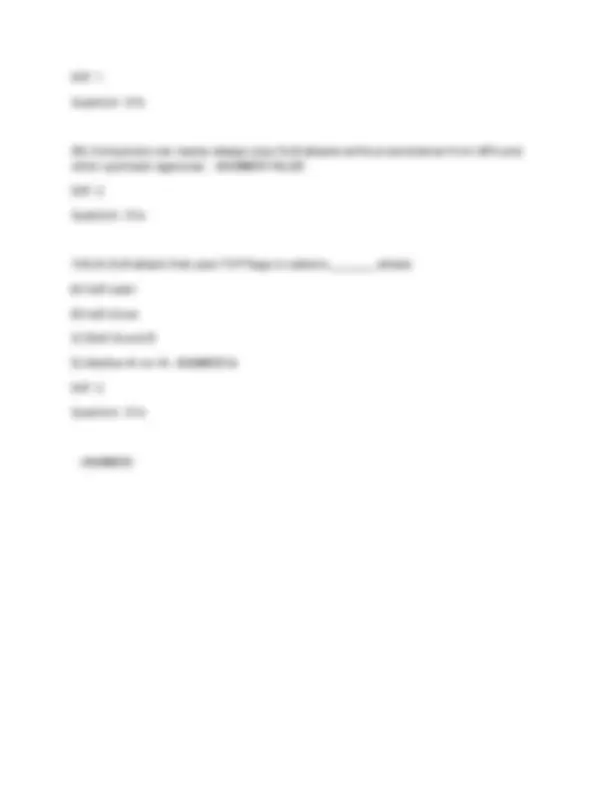


Study with the several resources on Docsity

Earn points by helping other students or get them with a premium plan


Prepare for your exams
Study with the several resources on Docsity

Earn points to download
Earn points by helping other students or get them with a premium plan
Community
Ask the community for help and clear up your study doubts
Discover the best universities in your country according to Docsity users
Free resources
Download our free guides on studying techniques, anxiety management strategies, and thesis advice from Docsity tutors
NETSEC 4 EXAM QUESTIONS AND CORRECT ANSWERS 100% VERIFIED!!
Typology: Exams
1 / 85

This page cannot be seen from the preview
Don't miss anything!














































































Ensuring network ________ means that authorized users have access to information, services, and network resources. A) confidentiality B) integrity C) availability D) authentication Answer - ANSWER C
In regards to network security, ________ means preventing unauthorized users from gaining information about the network structure, data flowing across the network, network protocols used, or packet header values. A) confidentiality B) integrity C) availability D) authentication Answer - ANSWER A
Ensuring appropriate network ________ means preventing attackers from altering the capabilities or operation of the network. A) confidentiality B) integrity C) availability D) functionality Answer - ANSWER D
In regards to network security, ________ is the policy-driven control of access to systems, data, and dialogues. A) confidentiality B) integrity C) access control D) availability Answer - ANSWER C
"Death of the perimeter" is a phrase used by network administrators to convey that creating a 100% secure network is impossible. Answer - ANSWER TRUE
An indirect attack occurs when an attacker tries to flood a victim with a stream of packets directly from the attacker's computer. Answer - ANSWER FALSE
Similar to a direct attack, an indirect attack occurs when an attacker spoofs his/her IP address. Answer - ANSWER TRUE
________ is the process of obscuring an attackers source IP address. A) Backscatter B) Spoofing C) IP Flood D) None of the above Answer: - ANSWER B
A ________ attack is when a victim is flooded with SYN packets in an attempt to make many half-open TCP connections. A) SYN flood B) Ping flood C) HTTP flood D) None of the above Answer - ANSWER A
A ________ attack is when a victim is flooded with ICMP packets that appear to be normal supervisory traffic. A) SYN flood B) Ping flood C) HTTP flood D) None of the above Answer - ANSWER B
A ________ attack is when a webserver is flooded with application layer web requests. A) SYN flood
________ are compromised hosts running malware controlled by the hacker. A) DDoS B) ICMP C) Bots D) None of the above Answer: - ANSWER C
An attacker controlling bots in a coordinated attack against a victim is known as a ________. A) DoS attack B) DDoS attack C) ICMP D) None of the above. Answer - ANSWER B
Once established, botnets can be leased to other criminals for DoS attacks. Answer - ANSWER TRUE
________ are an additional layer of compromised hosts that are used to manage large groups of bots. A) Botnets B) Handlers C) Phatbots D) None of the above Answer - ANSWER B
In a P2P attack, there is a change in the overall volume of traffic but the traffic pattern is the same. Answer - ANSWER FALSE
In a P2P attack, there is a change in traffic pattern but the overall volume of traffic is the same. Answer - ANSWER TRUE
Listing your friend's home in the local classifieds at a low price is equivalent to a ________. A) P2P redirect B) P2P port C) DDoS D) None of the above Answer - ANSWER A
In a reflected DoS attack, attackers send spoofed requests to legitimate servers. The servers then send all responses to the victim. Answer - ANSWER TRUE
In a smurf flood DoS attack, attackers can benefit from a multiplier effect because multiple ICMP requests are responded to by a single host. Answer - ANSWER FALSE
In a smurf flood DoS attack, attackers can benefit from a multiplier effect because a single ICMP request is responded to by multiple hosts. Answer - ANSWER FALSE
A ________ is an older attack that uses an illegally large IP packet to crash an operating system.
ARP is used to resolve 48-bit IP addresses into 32-bit local MAC addresses. Answer - ANSWER FALSE
ARP is used to resolve 32-bit IP addresses into 48-bit local MAC addresses. Answer - ANSWER TRUE
Rerouting traffic using ARP poisoning is an attack on ________ of a network. A) functionality B) confidentiality C) Both A and B D) None of the above Answer - ANSWER C
One problem with ARP requests and replies is that they do not require authentication of verification. Answer - ANSWER TRUE
In normal ARP traffic, generally an attacker on the same network cannot see traffic between two hosts. Answer - ANSWER TRUE
In normal ARP traffic, every host can make ARP requests. Answer - ANSWER TRUE
In a MITM attack, access to the local network is not required in order to work. Answer - ANSWER FALSE
________ is/are effective method(s) to preventing ARP poisoning attacks. A) Static tables B) Limiting local access C) Both A and B D) Neither A nor B Answer - ANSWER C
Traditionally, Ethernet LANs offered no access security. Answer - ANSWER TRUE
Access control is more of a problem for wired LANs than for wireless LANs. Answer - ANSWER FALSE
Eavesdropping usually is more of a concern for ________ LANs than for ________ LANs. A) wired, wireless B) wireless, wired C) about an equal concern for wired and wireless LANs D) None of the above Answer - ANSWER B
________ is called Port-Based Access Control. A) 802.11i B) 802.1X C) Both A and B D) Neither A nor B Answer - ANSWER B
A) a request for a different authentication mechanism B) a negative acknowledgement C) Both A and B D) Neither A nor B Answer - ANSWER B
An EAP message begins with an ________ message. A) EAP request B) EAP accept C) EAP start D) EAP response Answer - ANSWER C
An EAP failure message is sent to the ________. A) authentication server B) authenticator C) client D) Any of the above Answer - ANSWER B
When a new EAP authentication is added, software does not have to be changed on the ________. A) client B) authenticator C) central authentication server D) No software has to be changed on ANY device Answer - ANSWER B
When a new EAP authentication is added, software has to be changed on the ________. A) authenticator B) central authentication server C) Both A and B D) Neither A nor B Answer - ANSWER B
Most central authentication servers are governed by the ________ standard. A) EAP B) RADIUS C) IPsec D) 802.1X Answer - ANSWER B
________ is used by ________ for authentication. A) EAP, RADUS B) RADIUS, EAP C) Both A and B D) Neither A nor B Answer - ANSWER A
EAP uses RADIUS for authentication. Answer - ANSWER FALSE
The 802.1X protocol created for wired LANs can work in wireless LANs without significant modification.
B) wireless DOS attacks C) unauthorized network access D) None of the above Answer - ANSWER C
Secure wireless networks can be legally accessed by anyone and are frequently posted as such. Answer - ANSWER FALSE
Open networks can be legally accessed by anyone and are frequently posted as such. Answer - ANSWER FALSE
Rogue access points are authorized access points set up by individuals or departments. Answer - ANSWER FALSE
Rogue access points are unauthorized access points set up by individuals or departments. Answer - ANSWER TRUE
By giving unauthorized users access to a local WLAN means that they are on the local network. Answer - ANSWER TRUE
After gaining wireless access to the private network, the attach can ________. A) cause harm to internal clients B) steal data C) launch external attacks
D) All of the above Answer - ANSWER D
A ________ can be used to gather network information or user data. A) RFMON B) packet sniffer C) whaling device D) None of the above Answer - ANSWER B
Focusing electronic attacks on specific high-value targets is known as promiscuous attacks. Answer - ANSWER FALSE
Focusing electronic attacks on specific high-value targets is known as whaling. Answer - ANSWER TRUE
In a man-in-the-middle attack, an evil twin sends own attacks, impersonating the victim. Answer - ANSWER TRUE
In a man-in-the-middle attack, ________. A) an evil twin must have a stronger signal than the legitimate AP B) an evil twin sends own attacks, impersonating the victim C) Both A and B D) Neither A nor B Answer - ANSWER C
C) Both A and B D) Neither A nor B Answer - ANSWER C
RTS frames tell other wireless clients that you want to transmit for a given amount of time. Answer - ANSWER TRUE
CTS frames tell other wireless clients that you want to transmit for a given amount of time. Answer - ANSWER FALSE
CTS frames tell other clients that you have received a RTS frame. Answer - ANSWER TRUE
What standard did the 802.11 Working Group create to extend 802.1X operation to WLANs with security for EAP? A) 802.11i B) 802.1i C) 802.1Xi D) None of the above Answer - ANSWER A
In 802.11i, EAP outer authentication takes place before inner authentication. Answer - ANSWER TRUE
In 802.11i, ________ authentication always uses SSL/TLS. A) inner B) outer C) Both A and B D) Neither A nor B Answer - ANSWER B
PEAP is a popular extended EAP protocol. Answer - ANSWER TRUE
802.11i offers strong security. Answer - ANSWER TRUE
The original 802.11 core security protocol, ________, was deeply flawed. A) 802.11i B) WPA C) WEP D) None of the above. The original core protocol was NOT deeply flawed. Answer - ANSWER C
WEP stands for ________. A) wireless equivalent privacy B) wireless equivalent policy C) wired equivalent privacy D) wired equivalent policyAnswer - ANSWER C
WEP typically takes ________ to crack today.